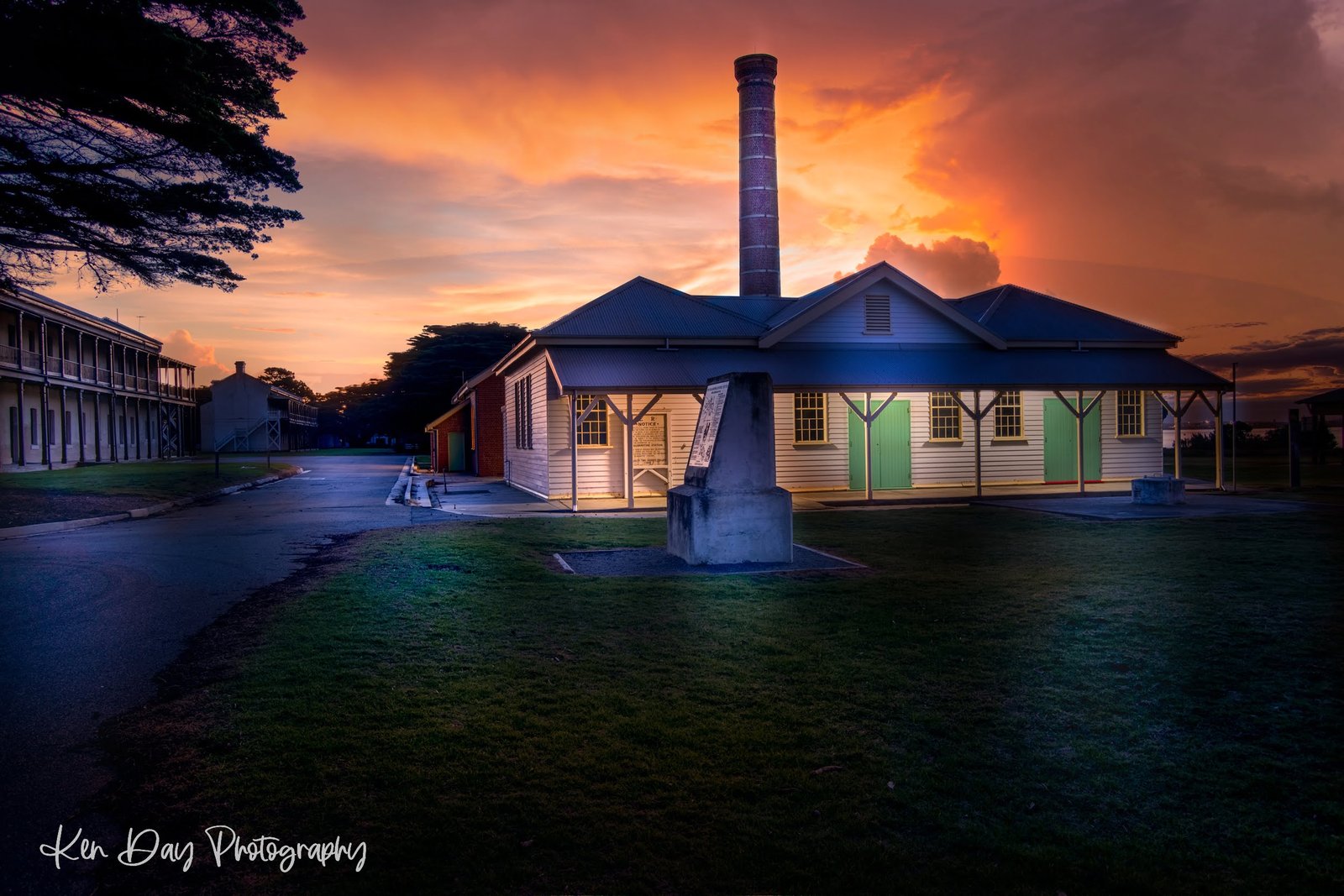Sorrento, a charming coastal town in Victoria, Australia, is not only known for its stunning natural beauty but also for its rich architectural heritage. From historic buildings to modern marvels, Sorrento boasts an impressive collection of notable structures that are sure to captivate any architecture enthusiast. Whether you’re wandering the streets lined with Victorian-era cottages or admiring the intricate designs of contemporary beach houses, Sorrento offers a diverse range of architectural gems that reflect its unique history and style. So, if you’re eager to explore the architectural wonders of this enchanting town, Sorrento is waiting to delight and inspire you.

View Bayview Apartment Sorrento Here.
Architectural History of Sorrento
Development of the town
Sorrento, a charming coastal town located in Victoria, Australia, has a rich architectural history that reflects the development and influences of European settlers. The town’s history can be traced back to the mid-19th century when it was first established as a fishing village. Over the years, Sorrento evolved into a popular vacation destination, attracting both locals and tourists with its stunning coastal landscapes and picturesque charm.
Influence of European settlers
European settlers played a significant role in shaping the architectural landscape of Sorrento. Settlers from countries such as Italy, Greece, and England brought with them their unique architectural styles and techniques, which influenced the design principles of the buildings in the town. These influences can be seen in the fusion of Mediterranean, classical, and Victorian architectural styles that are prevalent in many of Sorrento’s buildings.
Architectural styles in Sorrento
Sorrento boasts a diverse range of architectural styles, each contributing to the town’s distinct character. The Mediterranean-style buildings often feature stucco exteriors, red-tiled roofs, and wrought iron details, reminiscent of the coastal villas found in Italy. Classical-style architecture can be seen in the use of columns, pediments, and symmetrical designs, reflecting the elegance and grandeur of ancient Greek and Roman structures. Victorian-style buildings showcase ornate details, intricate woodwork, and decorative embellishments, showcasing the influence of the Victorian era.
Significant Architects in Sorrento
John Stanley Turner
John Stanley Turner, an esteemed architect, left an indelible mark on Sorrento with his innovative and distinctive architectural designs. Known for his appreciation of classical architecture, Turner incorporated elements of Greek and Roman styles into his works, creating buildings that exuded elegance and timeless beauty. His notable works include private residences, churches, and public buildings, all of which showcased his impeccable attention to detail and craftsmanship.
David Cortese
David Cortese, a visionary architect, brought a modern flair to Sorrento’s architectural landscape. Drawing inspiration from contemporary design principles, Cortese’s buildings often featured clean lines, open spaces, and large windows that embraced natural light. His architectural style seamlessly blended functionality with aesthetics, creating structures that were both visually pleasing and practical. Cortese’s contributions to Sorrento include residential complexes, commercial spaces, and public facilities.
Christopher Megowan
Christopher Megowan, an architect renowned for his sustainable and environmentally friendly designs, has made a significant impact on the architectural scene in Sorrento. Megowan’s works often incorporate energy-efficient materials, passive heating and cooling systems, and sustainable building practices. His buildings harmonize with the natural surroundings, emphasizing the importance of preserving Sorrento’s unique coastal environment. Megowan has designed eco-friendly homes, community centers, and commercial spaces that exemplify the principles of sustainable architecture.
View Bayview Apartment Sorrento Here.
Notable Buildings in Sorrento
Hotel Sorrento
Hotel Sorrento, an iconic structure nestled in the heart of the town, stands as a testament to Sorrento’s architectural legacy. This magnificent building, constructed in the late 19th century, showcases a captivating blend of Victorian and classical architectural styles. Its grand façade, adorned with elaborate detailing and ornate features, commands attention and transports visitors to a bygone era of opulence. Hotel Sorrento has been meticulously preserved and has become a popular destination for visitors seeking a taste of old-world charm.
Sorrento Hotel
The Sorrento Hotel, another notable building in the town, exudes a timeless elegance that captures the essence of Sorrento’s architectural heritage. Built in the early 20th century, the building’s Mediterranean-inspired design is characterized by its white stucco exterior, terracotta roof tiles, and arched windows and doorways. The Sorrento Hotel offers a luxurious retreat for guests, with its stunning views of the coast and its impeccable attention to architectural detail.
Sorrento Post Office
The Sorrento Post Office, a historical landmark, showcases a unique blend of architectural styles that reflect the changing times. This charming building, constructed in the late 19th century, features elements of both Victorian and Mediterranean designs. Its red brick façade, ornamental details, and generous porch give it a distinct character that stands out amidst the surrounding architecture. The Sorrento Post Office continues to serve as a functioning post office, while also serving as a reminder of the town’s architectural significance.
Hotel Sorrento
Architectural features
The architectural features of Hotel Sorrento are a testament to the opulence and sophistication of Victorian and classical design principles. The grand façade of the building showcases intricate detailing, including ornate cornices, pilasters, and decorative friezes. The building’s symmetrical design conveys a sense of balance and harmony, while the large windows allow natural light to flood the interior spaces. The interior of Hotel Sorrento boasts high ceilings, elegant moldings, and intricate woodwork, creating an atmosphere of timeless elegance.
Historical significance
Hotel Sorrento holds great historical significance, as it represents the grandeur and luxurious lifestyle of the late 19th century. The building has witnessed the transformation of Sorrento from a quaint fishing village to a popular seaside resort town. It has welcomed countless visitors over the years, who have sought refuge in its elegant rooms and enjoyed the breathtaking views of the coast. Hotel Sorrento stands as a reminder of the town’s storied past and remains an iconic landmark in the area.
Current use
Today, Hotel Sorrento serves as a charming boutique hotel that offers guests a unique blend of historical charm and modern comfort. The hotel has been tastefully renovated to preserve its original architectural details while incorporating contemporary amenities. Visitors can experience the allure of Victorian-era luxury while enjoying the convenience of modern facilities. The breathtaking views of the ocean and the surrounding landscape make Hotel Sorrento a beloved destination for both locals and tourists alike.


Sorrento Hotel
Architectural features
The Sorrento Hotel showcases a captivating fusion of Mediterranean and classical architectural styles. The building’s exterior features white stucco walls, terracotta roof tiles, and an abundance of arched windows and doorways. The symmetry in its design creates a sense of balance and harmony, while the use of vibrant colors and intricate patterns adds a touch of playfulness to the structure. The interior of the hotel is characterized by spacious rooms, high ceilings, and expansive windows that frame the picturesque coastal views.
Historical significance
Constructed in the early 20th century, the Sorrento Hotel holds historical significance as a symbol of the town’s growth and development during this period. The hotel played a significant role in establishing Sorrento as a sought-after coastal destination, attracting affluent visitors from near and far. It has witnessed the changing times and has been a witness to the town’s evolution into a vibrant tourist hub. The Sorrento Hotel stands as a testament to the town’s architectural heritage and cultural significance.
Current use
Today, the Sorrento Hotel continues to serve as a luxurious retreat for visitors seeking an unforgettable coastal getaway. The hotel offers guests an opportunity to immerse themselves in the charm and elegance of its architectural design while enjoying modern amenities and exceptional hospitality. Whether it’s relaxing by the pool, indulging in fine dining, or exploring the town’s attractions, the Sorrento Hotel provides a memorable experience that combines history, luxury, and natural beauty.
Sorrento Post Office
Architectural features
The Sorrento Post Office showcases a unique blend of Victorian and Mediterranean architectural styles. Its red brick façade, contrasting with the surrounding buildings, draws attention and adds a touch of warmth and character. The building’s ornamental details, including arched windows, decorative lintels, and a generous front porch, reflect the influence of Victorian design principles. The use of brickwork and the incorporation of Mediterranean elements, such as terracotta roof tiles, create a distinctive and visually appealing structure.
Historical significance
Constructed in the late 19th century, the Sorrento Post Office holds historical significance as a symbol of Sorrento’s growth and development during this period. As a functional post office, the building has served as a vital hub for communication and community interaction. It has witnessed the changing times and has played a role in connecting people and facilitating the exchange of information. The Sorrento Post Office stands as a reminder of the town’s architectural heritage and its role in shaping the local community.
Current use
The Sorrento Post Office continues to serve as a functioning post office, catering to the communication needs of the local community. While embracing its historical significance, the building also acts as a gathering place, hosting community events and exhibitions that celebrate Sorrento’s rich history and cultural heritage. Visitors can admire the architectural beauty of the post office while enjoying its practical services, providing a unique blend of functionality and aesthetics.
John Stanley Turner
Background and influences
John Stanley Turner, a highly influential architect, was born in Sorrento and had a profound impact on the town’s architectural landscape. Turner’s architectural style was heavily influenced by his appreciation for classical design principles, particularly Greek and Roman architecture. His extensive travels throughout Europe allowed him to study and draw inspiration from iconic structures, such as the Parthenon in Athens and the Colosseum in Rome. Turner’s designs often showcased elements such as columns, arches, and symmetrical layouts, showcasing his passion for classical architecture.
Notable works in Sorrento
Turner’s architectural prowess can be witnessed in several notable buildings in Sorrento. One of his most renowned works is the St. John’s Anglican Church, which displays his impeccable attention to detail and mastery of classical design elements. The church’s majestic bell tower, distinguished by its elegant columns and intricate stonework, is a testament to Turner’s skill in creating structures that exude grandeur and sophistication. Other notable works by Turner in Sorrento include private residences and public buildings, each reflecting his unique architectural style.
Legacy
John Stanley Turner’s architectural legacy lives on in Sorrento, serving as an inspiration for future generations of architects and designers. His contributions to the town’s architectural landscape have left an indelible mark, showcasing the beauty and timelessness of classical design principles. Turner’s works continue to captivate and inspire, reminding us of the importance of preserving and celebrating Sorrento’s architectural heritage.
David Cortese
Background and influences
David Cortese, a visionary architect, has significantly influenced the architectural scene in Sorrento with his innovative and contemporary designs. Cortese’s background in modern architectural principles and his exposure to international design trends have informed his unique approach to architectural design. Influenced by renowned architects such as Frank Lloyd Wright and Le Corbusier, Cortese emphasizes simplicity, functionality, and sustainability in his works. His designs often feature open spaces, large windows, and a seamless integration with the natural environment.
Notable works in Sorrento
Cortese’s architectural contributions to Sorrento are characterized by their striking modern aesthetics and practical design solutions. One of his notable works is the Sorrento Community Center, a contemporary building that serves as a hub for social gatherings and recreational activities. This building showcases Cortese’s commitment to sustainability, employing energy-efficient materials and incorporating environmentally friendly features. Cortese has also designed various residential complexes and commercial spaces in Sorrento, each exemplifying his innovative design principles.
Legacy
David Cortese’s architectural legacy in Sorrento is marked by his ability to marry modern aesthetics with sustainable design practices. His visionary approach to architecture has inspired others to prioritize environmental stewardship and the integration of design with the natural landscape. Cortese’s works serve as a reminder of the importance of sustainable design in creating buildings that not only satisfy the needs of the present but also contribute to a better future.
Christopher Megowan
Background and influences
Christopher Megowan, a renowned architect, has made a significant impact on Sorrento’s architectural landscape through his dedication to sustainable and energy-efficient design practices. Megowan’s background in environmental science and architecture has shaped his approach to design, emphasizing the importance of minimizing ecological impact while creating functional and aesthetically pleasing structures. His design philosophy draws inspiration from the principles of biophilic design and the integration of buildings into their natural surroundings.
Notable works in Sorrento
Megowan’s notable works in Sorrento demonstrate his commitment to sustainable architecture. One of his standout projects is the Green Villa, a stunning eco-friendly home that seamlessly integrates with the surrounding landscape. The Green Villa incorporates passive heating and cooling systems, rainwater harvesting, and the use of recycled materials, showcasing Megowan’s dedication to minimizing environmental impact. Megowan has also designed community centers and commercial spaces in Sorrento, each incorporating sustainable design principles.
Legacy
Christopher Megowan’s architectural legacy in Sorrento showcases the importance of sustainable design in the face of environmental challenges. His works serve as a beacon, inspiring others to prioritize environmental sustainability and embrace innovative design practices. Megowan’s commitment to harmonizing buildings with nature reminds us of the need to preserve and protect Sorrento’s coastal environment for future generations.
Preservation and Conservation Efforts
Organizations involved
Preserving and conserving Sorrento’s architectural heritage requires collective effort, involving various organizations dedicated to the cause. The Sorrento Historical Society plays a vital role in documenting and promoting the town’s architectural history. This organization works tirelessly to raise awareness and funds for the preservation of significant buildings and landmarks. Local government bodies, such as the Sorrento Shire Council, also play a crucial role in implementing policies that protect and enhance the town’s architectural character.
Challenges faced
Preserving Sorrento’s architectural heritage is not without its challenges. The rapid pace of development and the increasing demand for modern infrastructure pose a threat to the town’s historic buildings. Balancing the need for progress with the preservation of the past requires careful planning and collaboration. Financial constraints can also hinder conservation efforts, as the costs of maintaining and restoring historical structures can be substantial. Overcoming these challenges requires a collective commitment to the preservation of Sorrento’s architectural legacy.
Success stories
Despite the challenges, Sorrento has seen several successful preservation and conservation efforts. The restoration of Hotel Sorrento, for example, stands as a triumph in preserving the town’s architectural heritage. Through meticulous renovation, the hotel has been restored to its former glory, allowing visitors to experience the grandeur of the past while enjoying modern comforts. The ongoing maintenance of the Sorrento Post Office also showcases the town’s commitment to preserving historical structures. These success stories serve as inspiration for future projects and highlight the importance of preserving Sorrento’s architectural heritage.
In conclusion, Sorrento’s architectural history is a tapestry of influences, styles, and remarkable individuals. From the development of the town by European settlers to the notable works of architects like John Stanley Turner, David Cortese, and Christopher Megowan, Sorrento’s buildings reflect a rich tapestry of diverse architectural styles. Notable buildings such as Hotel Sorrento, the Sorrento Hotel, and the Sorrento Post Office showcase the town’s architectural heritage and historical significance. Ongoing preservation and conservation efforts by organizations and the community continue to protect and celebrate Sorrento’s architectural legacy, ensuring that future generations can appreciate the charm and beauty of this coastal town.

